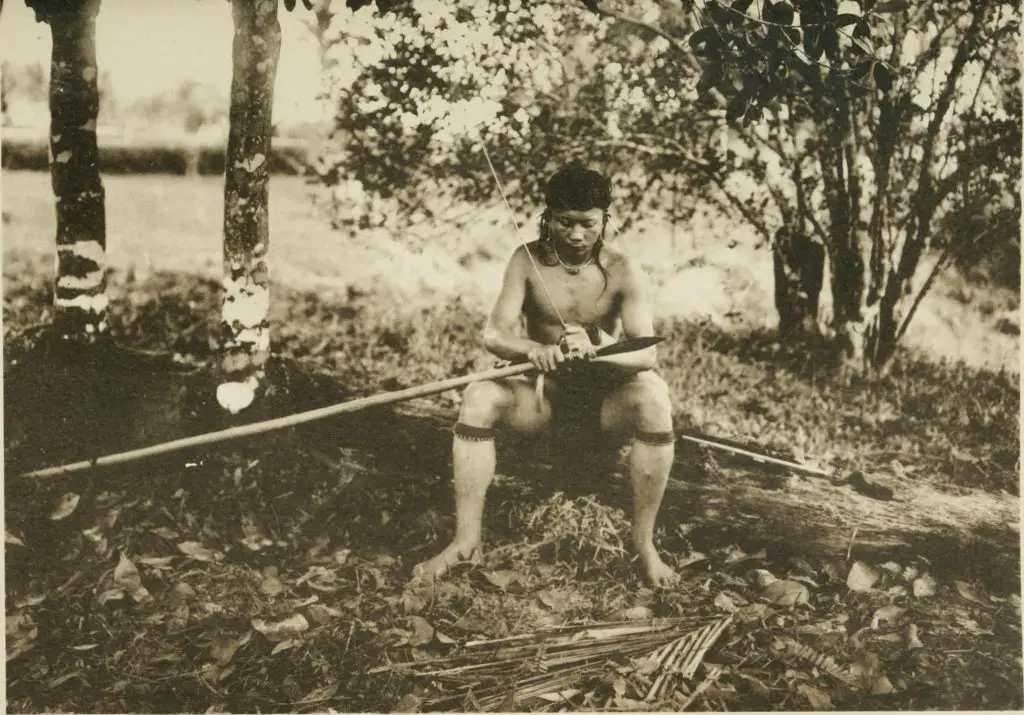James Brooke might be widely known as the first ‘White Rajah’ of Sarawak. However, did you know that he was not the first man to be known as the first ‘White Rajah’ in Borneo?
About 30 years before Brooke established his dynasty in Sarawak, British merchant and adventurer Alexander Hare founded an independent fiefdom in the south of Borneo called Maluka.
It was located around the Maluka river, southeast Banjarmasin on the Borneo island.
With the title of Rajah of Maluka, Hare’s kingdom even had a flag, coinage and custom duties.
Alexander Hare, the Merchant
Born in 1775 in London, Hare was the son of a watchmaker.
He joined a trading company in Portugal around 1800 and moved to Calcutta, India.
In 1807, he settled as a merchant in Malacca. During his stay in Malacca, Hare made acquaintance with Stamford Raffles of the British East India Company (EIC).
From 1811 till 1816, the Dutch briefly passed the control over Dutch Indies to Britain with Raffles as the newly appointed Lieutenant-Governor of Java.
Raffles, in turn appointed Hare as the Resident of Banjarmasin and Commissioner of the Islands of Borneo.

Alexander Hare, the Rajah of Maluka
As for Hare, he was already familiar with Banjarmasin as he visited the place as a merchant.
On behalf of EIC, Hare arrived in Banjarmasin in 1812 to negotiate a treaty with the Sultan.
Somehow during the negotiation, the Sultan granted Hare a present.
According to Tim Hannigan in his book Raffles and the British Invasion of Java, a resident was not supposed to receive any kind of gift from a king.
But Hare accepted a gift from the Sultan of Banjarmasin – 1,400 square miles of territory, six times the size of Singapore.
He received it not as an accession to British domains but as a personal fiefdom in his own name.
By right, Raffles should have demanded Hares return the territory to the Sultan.
Instead, Raffles developed an even closer relationship with Hare as he hoped that an English fiefdom in the south of Borneo might provide a strong British foundation against the Dutch one day.
Hannigan stated, “The land that Alexander Hare ruled was swampy morass. It never had many native inhabitants and Hare’s habits seem to have scared off the last of the locals as soon as he moved in.”
Alexander Hare and his harem
So Hare was in need of ‘subjects’ in order his kingdom to flourish.
He turned to Raffles asking for ‘people’. Raffles being a good friend, provided Hare the people he needed.
“In early 1813, Raffles had signed an order that all convicts could legitimately be sentenced to transportation in Java were to be shipped to Banjarmasin for Alexander Hare to do with them as he saw fit. Hare even received a subsidy of 25 rupees a head for every criminal he received,” Hannigan stated.
Although Hare minted his own coins, he didn’t pay a single cent to his labourers, making them nothing more than unpaid slaves.
On top of the male convicts that were sent to Maluka, Hare demanded women so that he could breed more settlers.
He preferred women “of loose morals”, he said.
And again Raffles sent ‘women of loose morals’ to Hare. They were homeless women on the streets of Batavia or women who were caught for petty theft.
As it turned out, the women’s first duty was to satisfy the huge sexual appetite of the ‘White Rajah’.
Today, a handful of Indonesian web portals today refer to him as the man who owned a harem in Banjarmasin.
Alexander Hare and the Banjarmasin Enormity
Author Ferdinand Mount in his book The Tears of the Rajas: Mutiny, Money and Marriage in India 1805-1905 called Hare ‘the dissolute wanderer’ who ‘might have stumbled out of a Conrad novel’.
Mount added, “He was a Lord Jim without the good intentions.”
Lord Jim is a character in Joseph Conrad’s 1900 novel. The novel was inspired by English mariner Austin Podmore Williams and Sarawak’s first rajah, James Brooke.
Unlike Brooke, Hare’s dream of an independent state started to crash after the signing of the Anglo-Dutch Treaty of 1814.
After rounds of negotiations between EIC and the Dutch, Hare was at first allowed to keep his little kingdom in Banjarmasin.
However, Hare reportedly antagonised the Dutch. They believed that Hare was planning to use Maluka to enhance British intrusions in the region.
In the end, the Dutch government declared that Hare had no legal right in Borneo and the Rajah of Maluka was no longer a king.
Mount pointed out, “When Hare was finally kicked out by the returning Dutch, they forced him to total up the number of his wretched slaves. There were 907 men, 462 women and 123 children crouching in his filthy huts.”
These numbers did not include the possibly hundreds of others who died or were lucky to have fled into the jungle.
Making another reference to Conrad’s work, Mount stated, “If Hare had not yet plunged as deep into evil as Conrad’s Mr Kurtz, it was only because he did not stay there long enough.”
Kurtz is a character in Conrad’s 1899 novella Heart of Darkness. He is an ivory trader and commander of a trading post in Africa. The book was inspired by Congo Free State, a territory personally owned by Belgium’s King Leopold II from 1885 to 1908. It is also known for its brutal history; losing up to 50 per cent of its population due to forced labour system.
Hare’s four-year reign as the first White Rajah in Borneo came to be known to Dutch historians as ‘De Bandjermasinche Afschuwelijkheid’ or ‘The Banjarmasin Enormity’.
Life after Maluka
After being kicked out of Banjarmasin, Hare drifted around the archipelago bringing along some of his slaves and women while trying to get back to his properties in Java.
However, the Dutch banned him from entering the island. He then shipped around and found himself in Cape Town, South Africa.
According to Hannigan, what Hare really wanted was a desert island on which to live out his dreams of debauched despotism undisturbed.
Then in 1826, he brought his household to an uninhabited coral atolls called the Cocos Islands.
Located a thousand miles west of Java in the middle of the Indian Ocean, Hare first found out about the place from one of his former employees John Clunies-Ross.
Clunies-Ross eventually also moved to Cocos Islands bringing his family and workers.
The two did not see eye to eye with each other.
After five years in Cocos Islands, Hare left again and now headed to Bengkulu.
Some reports stated that most of his slaves left Hare to join Clunies-Ross, while others said it was because Hare’s money was dwindling and he could not afford to bring everyone to Bengkulu.
Either way, the former Rajah of Maluku died in Bengkulu in 1835 after falling off his horse.
Reportedly, his remaining estate went to a woman named Dishta – a dancing girl whom Hare picked up from Calcutta.























